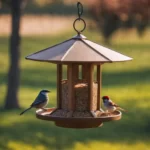Ants are among the most common household pests, known for their persistence and ability to infiltrate homes in search of food. To combat these unwelcome guests, many turn to ant traps, a popular and effective method for controlling ant infestations. This article will explore how these traps work and the science behind their effectiveness.
Ant Behavior
To understand how ant traps work, it’s important to first grasp the social structure and foraging behavior of ants. Ants live in colonies with a clear division of labor – workers, soldiers, and a queen. The worker ants, which we commonly see, are responsible for gathering food. Their behavior, including following pheromone trails and sharing food, plays a crucial role in the effectiveness of ant traps.
Types of Ant Traps
Bait Stations
Bait stations are among the most widely used ant traps. These devices attract ants using a food-based bait that contains poison. The bait stations are designed to allow ants to enter, consume the bait, and then return to their colony. Common ingredients in these baits include borax or fipronil, which are toxic to ants but are mixed with sweet or greasy substances to attract them.
Sticky Traps
Sticky traps work on a different principle. They use a sticky substance to physically trap ants that walk over them. These traps are effective in capturing individual ants but are less effective in dealing with an entire colony. Sticky traps are best used in areas where ant activity is visible but minimal, such as along edges or in corners.
Electronic Traps
Electronic ant traps are a more modern solution, using electricity to kill ants. These traps attract ants with bait and then use a small electric current to kill them upon contact. While effective for killing individual ants, they may not be as effective in eradicating an entire colony compared to bait stations.
How Ant Traps Work
Attracting Ants
The success of ant traps largely depends on their ability to attract ants. This is typically achieved through the use of attractants like food-based substances that mimic the ants’ natural food sources. These attractants can include sweet syrups or oils that are irresistible to ants. In addition to food attractants, some traps may also use synthetic pheromones to mimic the chemical trails ants use for navigation and communication, drawing ants into the trap more effectively.
Delivering the Poison
Once ants are attracted to the trap, the next step involves delivering poison to them. In bait stations, the poison is mixed with the attractant. This poison is usually a slow-acting toxin, such as borax or hydramethylnon. The slow action is crucial; it allows time for the worker ants to consume the bait and return to the colony to share it with other members, including the queen, before the poison takes effect.
Disrupting the Colony
The shared poison eventually reaches the queen, who is responsible for reproducing and sustaining the colony. By targeting the queen, ant traps can effectively disrupt the colony’s lifecycle. When the queen dies, she can no longer produce new ants, leading to the eventual collapse of the colony. This method is particularly effective against ant species that rely heavily on a single queen.
Choosing the Right Ant Trap
Selecting the appropriate ant trap depends on several factors, including the specific ant species you’re dealing with and the size of the infestation. For instance, bait stations might be more effective for larger colonies or for ants that are primarily looking for food. On the other hand, sticky traps or electronic traps could be suitable for smaller infestations or for monitoring ant activity in certain areas.
It’s also important to consider the safety of the household. In homes with pets or small children, certain types of traps or poisons might not be suitable. Always read and follow the manufacturer’s instructions when choosing and using ant traps.
Safety and Best Practices
When using ant traps, safety should always be a top priority, especially in households with children and pets. Here are some key safety tips and best practices to ensure effective and responsible use of ant traps:
- Read Instructions Carefully: Before using any ant trap, read the manufacturer’s instructions thoroughly. This will provide essential information on proper usage and safety precautions.
- Strategic Placement: Place ant traps in areas where ant activity is highest, but out of reach of children and pets. Common spots include near entry points, along walls, and close to ant trails.
- Handling and Disposal: Handle ant traps carefully, avoiding direct contact with the bait or sticky surfaces. Use gloves if necessary. Dispose of used traps according to the manufacturer’s guidelines and local regulations.
- Monitor Regularly: Check the traps regularly to assess their effectiveness and replace them as needed. This will also help in identifying if the infestation is decreasing or if additional measures are required.
- Combine with Other Methods: For comprehensive ant control, consider combining traps with other methods, such as sealing entry points and maintaining clean, food-free surfaces in your home.
- Preventive Measures: Alongside using traps, implement preventive measures to deter future infestations. This includes keeping your home clean, storing food in airtight containers, and eliminating standing water.
Conclusion
Ant traps are a valuable tool in controlling ant infestations in the home. By understanding how different types of traps work and choosing the right one for your situation, you can effectively tackle ant problems. Remember, the key to successful ant control is not just about killing individual ants, but targeting the entire colony, especially the queen.
It’s also crucial to use ant traps responsibly, considering the safety of all household members. With the right approach and regular monitoring, you can maintain an ant-free home. Integrated pest management, combining physical traps with good housekeeping practices, provides a sustainable and effective solution to managing these common household pests.



